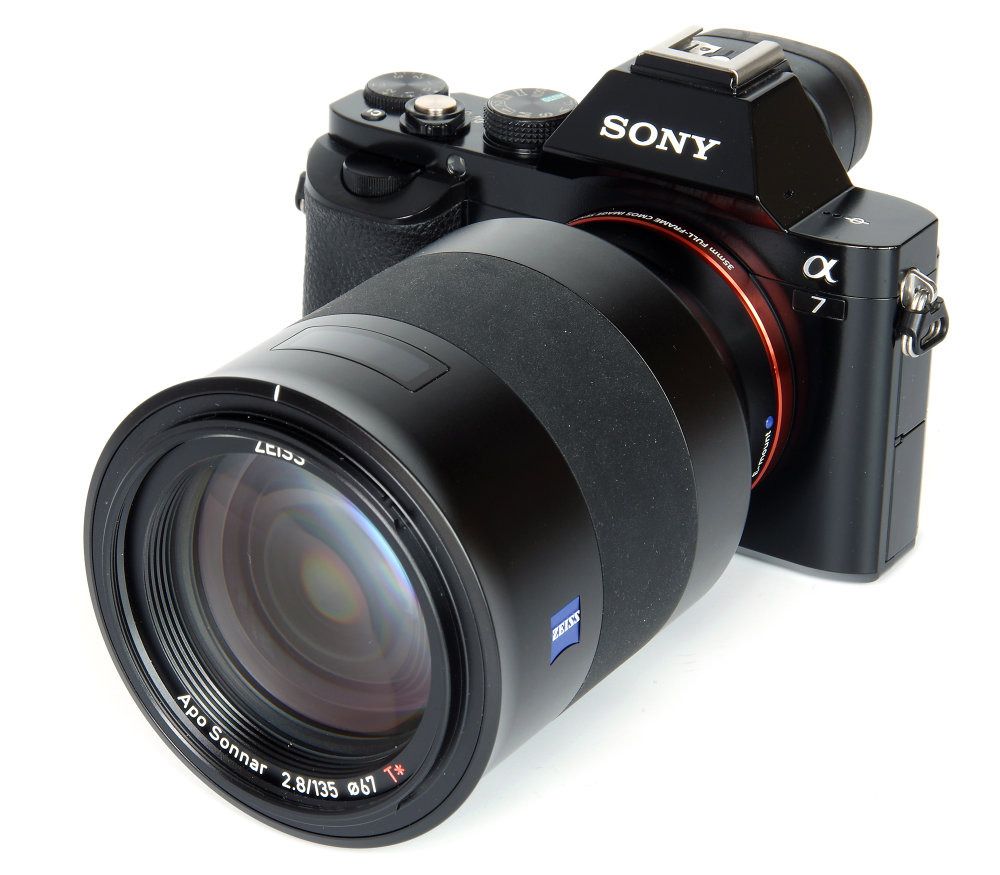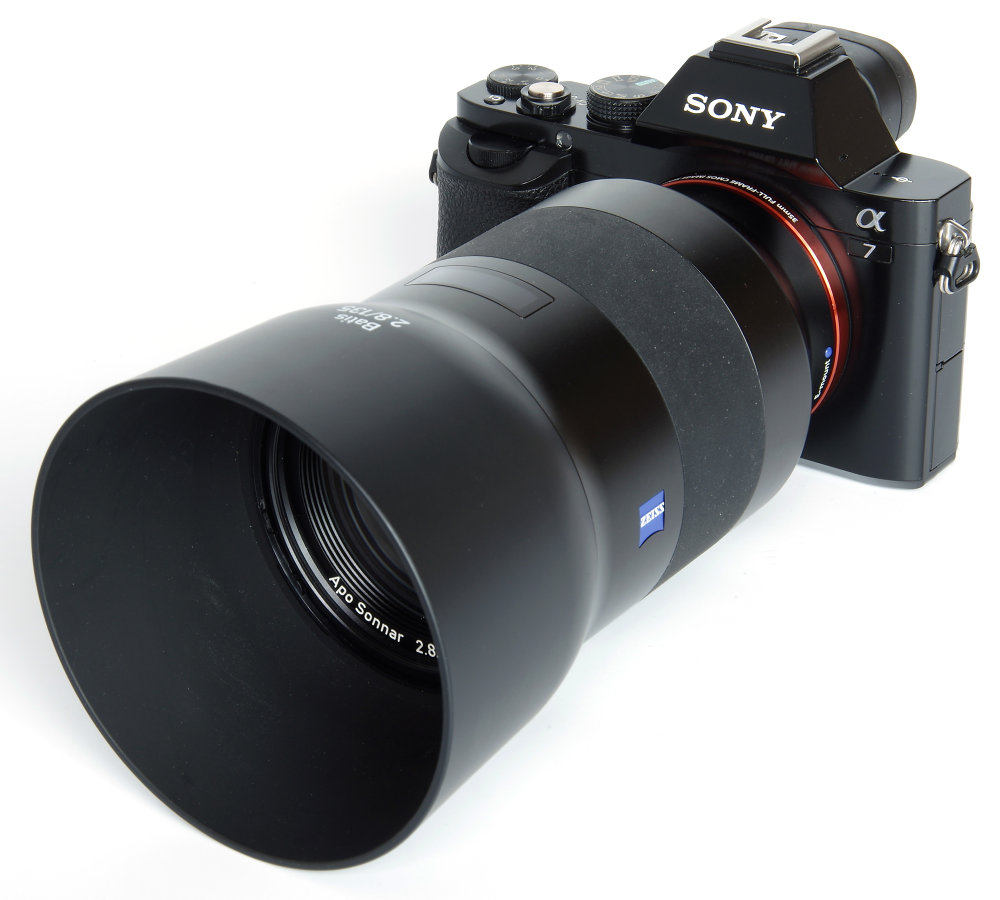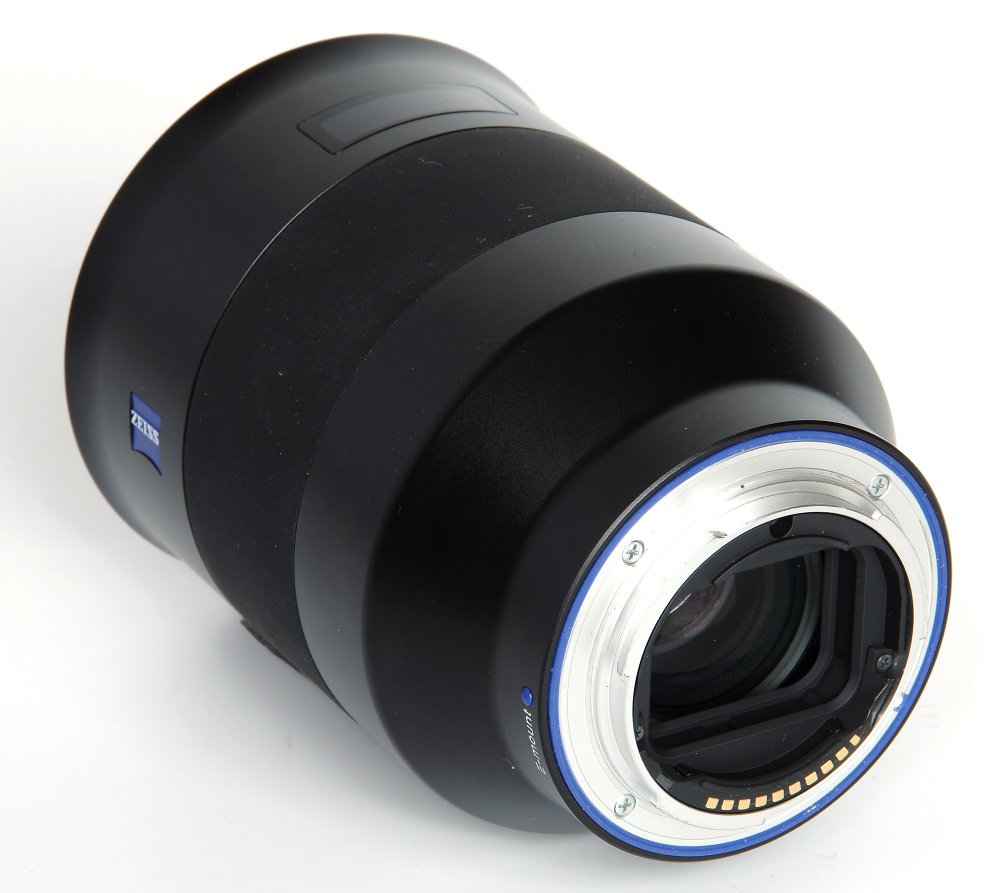Zeiss Batis 135mm f/2.8 Review
Zeiss Batis 135mm f/2.8 Apo Sonnar T* Handling and Features
The appearance of this chunky lens is one of sleek understatement, with hardly anything to disturb the smooth black lines. The front element, T* coated, is surrounded by a conventional 67mm filter thread. An outer bayonet is the means by which the generously sized lens hood is firmly clicked into position. Behind this, as we move towards the camera body, we find the classy recessed plates carrying the Zeiss name and also the small window for the OLED (Organic LED) display. The display shows the set distance, but also the depth of field at the set aperture. This is a nice touch.
Further back is the discrete focusing ring, made with a rubberised finish that does tend to pick up small white specks of dust at the slightest opportunity. Manual focusing is electronic, but there is probably little need for it in most circumstances as the fast, silent AF locks on without hesitation, every time. Focusing is down to 0.87m (2.9 feet), which is very usefully close, giving the possibility of really tight head portraits if required. Maximum magnification is 1:5.3.
The optical design is based on the Zeiss Sonnar of 1930, but this has moved on considerably since that time. The 135mm f/2.8 has been a staple lens for a very long time, for decades being the second lens that would be bought, after the 50mm standard that would be provided with the camera. Why 135mm? Basically, this is the longest lens that can be reliably focused by the rangefinder camera, a reminder of the Leica / Contax legacy that can be felt in photography even today. Longer than 135mm and the SLR focusing screen is more accurate.
But those lenses will be found with a very simple construction of perhaps 4 or 5 elements at most, and here we have a solid 614g of metal containing an apochromatic optical construction of 14 elements in 11 groups. Eight of these are anomalous partial dispersion glass. This design also has floating elements, which will assist in maintaining performance as we focus closer.
The diaphragm consists of 9 blades to improve bokeh, and there is also built-in OIS (Optical Image Stabilisation) that works with the SteadyShot system built into the cameras.
There is very little to note regarding the actual handling of the lens. It performs impeccably. There is good balance with the Sony Alpha A7 body, although the package cannot really be described as compact. The 135mm focal length does enable some very effective use of narrow depth of field. As a portrait lens, some may find it to be a little long and prefer something around 100mm, but it does make really tight head shots possible.
Used on an APS-C format camera it becomes a quite strong telephoto, equivalent to around 200mm in 35mm-format terms, and at this point becomes suitable for short range sports and wildlife shots. It is surprisingly versatile and a good telephoto choice for both formats.
Add your message
Please login here or if you've not registered, you can register here. Registering is safe, quick and free.
photodo Stats
428 MTF tests
74 in-depth photodo reviews
100+ users join each day
Help the lens community by reviewing or rating a lens today via our lens search
Latest Lens Reviews
- Chinon 28mm f/2.8 Vintage Lens Review
- Canon EF 70-200mm f/4L IS II USM Lens Review
- Samyang AF 85mm f/1.4 EF Review
- Sigma 70mm f/2.8 DG Macro Art Review
- Samyang AF 24mm f/2.8 FE Review
- Meike 50mm f/1.7 Review
- Tamron 70-210mm f/4 Di VC USD Review
- Lensbaby Burnside 35mm f/2.8 Review
- Asahi Super Takumar 50mm f/1.4 Review
- Asahi Super-Multi-Coated Takumar 135mm f/3.5 Review



